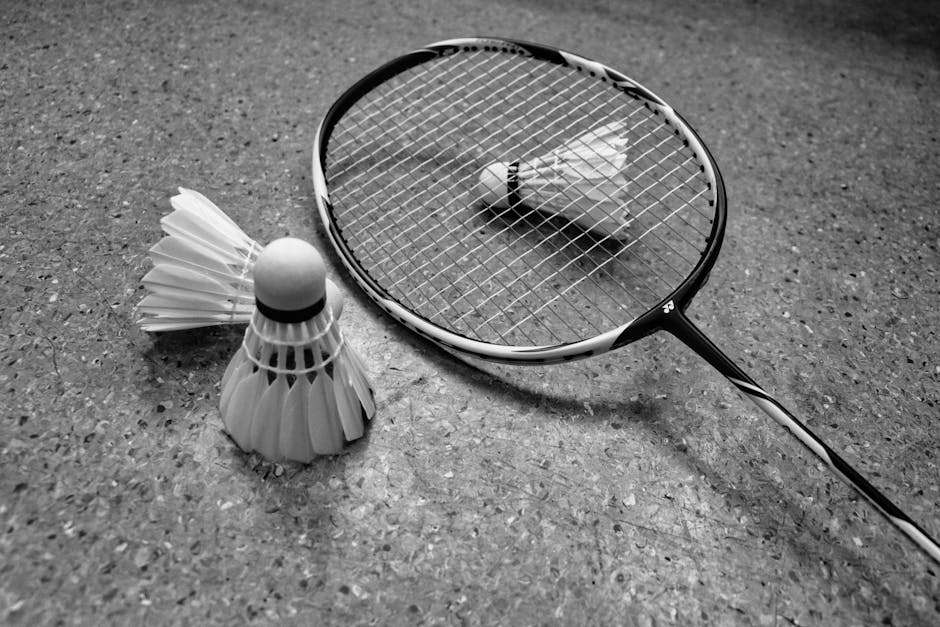A Beginner’s Guide to Choosing the Right Shuttle Flash for Badminton
Welcome to the world of badminton, a sport that combines agility, precision, and strategy. Whether you’re a weekend warrior or an aspiring professional, choosing the right shuttlecock can make a significant difference in your game. In this guide, we’ll explore everything you need to know about selecting the perfect shuttle flash for your badminton sessions. 🏸
Table of Contents
1. Understanding Shuttle Flash Basics
2. Types of Shuttlecocks
3. Key Factors to Consider
4. Tips for Testing Shuttlecocks
5. Conclusion
6. FAQ
Understanding Shuttle Flash Basics
Before diving into the ocean of options available, it’s essential to understand what a shuttle flash is. The term “shuttle flash” often refers to the speed and trajectory of a shuttlecock. A well-chosen shuttlecock can enhance your gameplay, providing consistent flight and durability.
Types of Shuttlecocks
1. Feather Shuttlecocks 🪶
Feather shuttlecocks are the choice of professionals and serious players. Made from goose or duck feathers, they offer superior flight stability and control. However, they are more susceptible to damage and may require frequent replacement.
2. Nylon Shuttlecocks
Nylon shuttlecocks, also known as plastic shuttlecocks, are more durable and affordable. They are ideal for beginners and casual players who prioritize longevity over precision. While they may not provide the same flight characteristics as feather ones, they are great for practice and recreational play.
Key Factors to Consider
1. Speed
The speed of a shuttlecock is crucial and is usually denoted by a number or color code on the packaging. Faster shuttlecocks are suitable for warmer climates, while slower ones are better for cooler conditions. Selecting the correct speed ensures optimal playability.
2. Weight ⚖️
The weight of the shuttlecock affects its speed and flight. Heavier shuttlecocks tend to travel faster but require more control, whereas lighter ones are easier to handle. Choose based on your skill level and preference.
3. Flight & Control ✈️
Good flight stability is essential for accurate shots. Feather shuttlecocks generally offer better flight precision. If control is your primary concern, consider feather over nylon.
4. Durability
While feather shuttlecocks provide excellent performance, they wear out quickly. On the other hand, nylon shuttlecocks offer greater durability, making them suitable for frequent practice sessions.
Tips for Testing Shuttlecocks
To ensure you’ve chosen the right shuttlecock, testing is crucial. Here are some tips:
1. Check the Bounce: Drop the shuttlecock from shoulder height and observe its bounce. Consistent rebound indicates good quality.
2. Observe Flight Path: Hit the shuttlecock gently across the net. A stable and consistent flight indicates it’s the right choice.
3. Assess Control: Play some rallies and observe your ability to control shots. This test will help you decide if the shuttlecock meets your requirements.
Conclusion
Choosing the right shuttle flash for badminton can significantly impact your playing experience. Whether you opt for feather or nylon shuttlecocks, consider factors such as speed, weight, flight, and durability. Remember, the best shuttlecock is one that complements your playing style and enhances your skills. Happy smashing! 🏸
FAQ
Q1: How often should I replace my shuttlecock?
A1: It depends on the type and frequency of play. Feather shuttlecocks may need replacing after a few games, while nylon ones can last longer.
Q2: Are feather shuttlecocks better than nylon ones?
A2: It depends on your needs. Feather shuttlecocks offer better flight and control, but nylon ones are more durable and economical.
Q3: What speed shuttlecock should I choose for indoor play?
A3: For indoor play, consider the temperature. In warmer environments, a slower shuttlecock is preferable, while a faster one suits cooler conditions.
Q4: Can beginners use feather shuttlecocks?
A4: Yes, beginners can use feather shuttlecocks, but they should be aware of the need for frequent replacements due to wear and tear.
Q5: How do I know if a shuttlecock is of good quality?
A5: Look for consistent flight, proper bounce, and durability. Testing in actual play conditions is the best way to determine quality. 🏸
